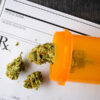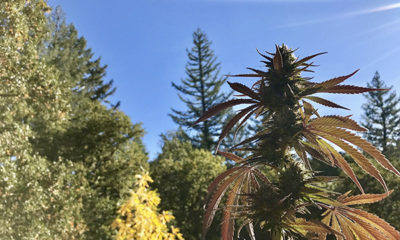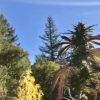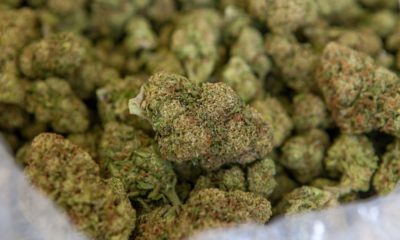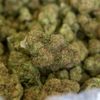
Joint Opinions
Choose Cannabis for Wellness, Not Intoxication
An excerpt from “The Cannabis Manifesto,” published by North Atlantic Books.
Bill O’Reilly eyed my brother and me like a hungry lion looking over a couple of lambs. He twisted his face into the trademark O’Reilly sneer and scolded us with a tone of triumph: “Come on, you know what the ruse is, you know what the scam is.”
I’d known the comment was coming. It’s standard procedure for hostile journalists. They all think medical cannabis is a fraud.
My own cannabis recommendation is technically for chronic pain, but I used it for many other purposes. Some were unquestionably therapeutic, like helping me sleep. Others, like shaking off nervousness or sadness, seemed borderline. But there were some that just didn’t fit my definition of medical use, like enhancing the enjoyment of a meal or a piece of music.
Like most people, I used to be locked into an outdated illness concept of human health that views us as either sick or healthy. If we are sick, we go to the doctor, who writes a prescription or recommends a procedure, after which we are supposed to recover and go back to being healthy — if we’re lucky.
But over the last few decades, it has become evident that human health actually operates on a spectrum of wellness. That spectrum occupies the space between perfect health and acute sickness, and it is where most humans spend the majority of their lives.
The best ways to preserve and enhance wellness are safe and non-invasive. We have learned that diet, exercise, acupuncture, chiropractic, meditation and other holistic healing techniques are effective alternatives to pills and operations.
That’s why so many gyms and yoga studios have opened in the United States; why most grocery stores have an organic section; why insurance policies often cover chiropractic, acupuncture, and nutritional counseling — and why integrative treatment centers for cancer have experienced explosive growth.
Over the years, many patients confided in me that they appreciated the protection of the law California’s Prop 215 but didn’t really consider themselves sick or injured. Non-patients also frequently approached me with comments like, “You know, Steve, I totally support everything you are doing to help patients. I believe in medical cannabis, and I smoke weed myself — but I’m not sick; I just like to get high.”
I would respond by asking for details. When and why do you use cannabis? What specific benefits does it provide? How has cannabis made your life different?
A composite of the answers I received would run something like this:
“Without cannabis, I’d get home feeling irritated from a long day at work, a hassle with a boss or a coworker, a hot rush-hour commute, whatever. My back might be aching, and I wouldn’t feel like playing with my kids or talking to my wife. I’d often have a sour stomach and not much appetite. Dinner wasn’t very appealing and sometimes gave me heartburn or indigestion. After dozing off in front of the TV, I’d wake up and sometimes not be able to go back to sleep. In the morning I could be tired, and not feel like going to work or doing much of anything.
“With cannabis, everything is different. I’m happy to see my family and have as much fun playing with my kids as they do. I forget about my aching back, and reuniting with my wife is a pleasure, not a chore. Dinner smells and tastes great, and I never have a problem with digestion. After dinner, the wife and I put the kids to bed, and then we have some extra special intimate time together. I curl up next to her, sleep soundly till morning, and wake up refreshed and ready for the new day. Cannabis makes my life a lot better, but I’m not sick and I wouldn’t die or end up in the hospital without it. I’m not a patient; I just like cannabis.”
Over time I realized that the same description of symptoms presented to the average MD would probably result in a diagnosis of anxiety, insomnia, depression, arthritis, low libido, erectile dysfunction and acid reflux. Every night a parade of ads promoting a variety of pharmaceuticals for exactly these conditions marches out of our TV sets — and most of them have a list of side effects like something out of a Stephen King novel.
For most people, cannabis is a better alternative. Its power to preserve and restore homeostasis throughout the brain and body makes cannabis effective for almost every condition advertised on TV, and its side effects are mild and transitory. It also has a wide range of more unique benefits that are frequently overlooked, or mistakenly characterized as “getting high.”
These include its ability to extend patience and promote self-examination; to awaken a sense of wonder and playfulness, and openness to spiritual experience; to enhance the flavor of a meal, the sound of music, or the sensitivity of a lover’s touch; to open the mind and inspire creativity; to bring poetry to language and spontaneity to a performer; to catalyze laughter, facilitate friendship, and bridge human differences.
When I first shared this interpretation with my father, he gave me his “don’t BS me” look. Dad was already using cannabis for pain and insomnia, so he didn’t outright challenge me — but I could tell I had strayed too far into New Age woo-woo territory for his comfort. So on our next visit, I was pleasantly surprised to hear that my father had noticed an increased desire to write his memoirs — to do something creative — after his evening dose of THC-rich tincture. After his grief had subsided enough to date again, Dad very discreetly let me know that he’d also discovered its ability to enhance sensuality and intimacy.
These are not the attributes of an “intoxicant,” which is defined by Merriam-Webster as a substance that can “excite or stupefy… to the point where physical and mental control is markedly diminished.” They are the attributes of a wellness product that enhances and facilitates some of the most meaningful parts of the human experience.
Different cultures have used a variety of methods and substances to achieve enhanced states of mind, but all pursue it by one means or another. Each one has developed its own set of cultural norms and language to assess and regulate appropriate use, but there’s never been a drug-free society in all of history.
Since the passage of legalization in Colorado and Washington, the term “recreational use” has become the catchall phrase to describe all consumption of cannabis that is not “medical.” Lacking any commonly accepted definition, “recreational use” has in effect become a code word to describe “just getting high” — or intoxication. This is unfortunate, because the phrase obscures more than it illuminates, and it perpetuates misconceptions about cannabis that have kept it illegal for decades.
I didn’t come to this realization quickly or easily. When I first heard the term “recreational use” it sounded like a step forward — and it was, compared to words like “addiction” and “dependency.” It also provided a convenient contrast to “medical use” after that phrase entered the modern lexicon in the 1990s — but the more I used the language, the less comfortable I felt with it.
Neither medical nor recreational fully or accurately described the way I saw most people using cannabis. I suspected there was a third category but didn’t know how to analyze or describe it. It’s taken a lifetime of activism and probing questions by the likes of Bill O’Reilly to collapse the fallacy and crystallize my thoughts into a coherent thesis.
Today, I believe there is no such thing as the recreational use of cannabis. The concept is equally embraced by prohibitionists and self-professed stoners, but it is self-limiting and profoundly unhealthy. Defining cannabis consumption as elective recreation ignores fundamental human biology and history, and devalues the very real benefits the plant provides.
Dennis Peron, the man who opened the first cannabis dispensary in the U.S., has been derided for saying that all marijuana use is medical. I would make the same point a bit differently: the vast majority of cannabis use is for wellness purposes. The exception to the rule is misuse; any psychoactive material can and will be problematic for some percentage of the population — cannabis included.
The downsides of cannabis pale in comparison to those of other substances, but they still need to be taken seriously and looked at carefully. The lessons learned with alcohol — that it shouldn’t be marketed to kids, or promoted as part of a glamorous lifestyle — should be integrated into our new approach with cannabis.
We also need to recognize that the chemistry and effects of the plant are qualitatively different than those of alcoholic beverages. When accurately viewed in the context of science and history, cannabis emerges as a medical and wellness product with a huge range of applications. One day “recreational” cannabis will seem as quaint as “medical” alcohol was after the end of liquor prohibition.
TELL US, how does cannabis improve your wellbeing?
Originally published in the print edition of Cannabis Now. LEARN MORE










